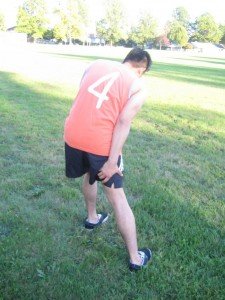Muscle injuries are commonly called as strains or pulls. These injuries are the usual reasons why some athletes miss out on practices or games. When engaging in certain activities that involve explosive movements such as starting a sprint or rapidly changing directions, the force can be intense that the tissues end up partly or fully torn.
The factors that increases the risk for an individual to muscle injuries include previous injuries, older age, poor flexibility, fatigue and lack of muscular strength. Many athletes end up with muscle injuries when starting a training regimen. Luckily, most cases do not necessitate surgery and full recovery is likely.
How muscle damage occurs and the response of the body
Muscle injuries occur once the force in the muscle is significant that the tissue starts to tear. Take note that this can develop inside the muscle in which the tendon links to the bone or at the connection point amidst the muscle and tendon.

When the muscles are injured initially, there is significant inflammation and swelling. After the inflammatory phase, the muscle starts to heal by restoring muscle fibers from stem cells around the injury site. Nevertheless, a substantial amount of scar tissue also develops at the injury site. After some time, this scar tissue modifies but the muscle does not fully regenerate which increases the risk for future injuries.
Category of muscle injuries
- Grade I – minimal damage to the individual muscle fibers that results to slight loss of strength and motion. These muscle injuries take about 2-3 weeks to heal.
- Grade II – there is extensive damage due to involvement of more muscle fibers but not fully ruptured. These injuries have significant loss of strength and motion. It requires 2-3 months before the individual can resume his/her activities.
- Grade III – there is full rupture of a muscle or tendon characterized by palpable defect in the affected region. Swelling in the area makes it hard to distinguish. Surgery is often required to reconnect the damaged muscle and tendon.
An X-ray is beneficial in ruling out a fracture or dislocation as the cause of pain. Among young athletes, the tendon might pull off a bone piece where it is attached that is seen in an X-ray. An MRI is oftentimes useful in determining where the injury has occurred and if there is a full rupture or not.
Management
Most cases of acute muscle injuries involve partial thickness tears. These are treated effectively using rest, ice, compression and elevation (RICE method) and non-steroidal anti-inflammatory drugs (NSAIDs). This is part of treatment in the initial week followed by a gradual physical therapy regimen.
An individual can resume full activity if there is no more pain, has full range of motion and full strength. If activity is resumed early, there is a high risk for re-injuring the muscle.
